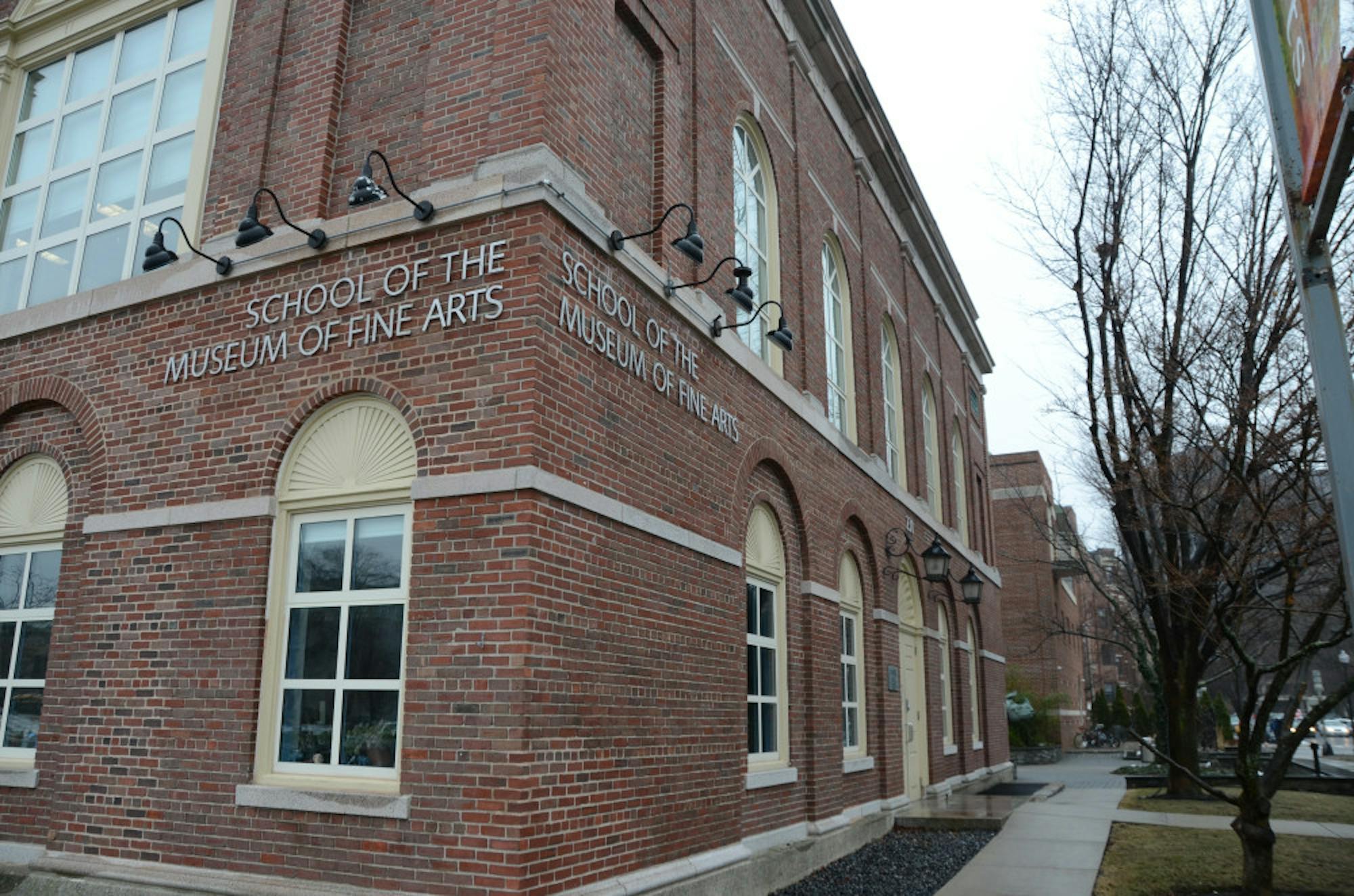Students in the five-year BFA + BA/BS combined degree program between the School of Arts and Sciences (A&S) and the School of the Museum of Fine Arts (SMFA) at Tufts are immersed in a rigorous program of study as they balance degrees in the liberal arts or the sciences and an extensive concentration in the visual arts.
In addition to taking studio-based and art history courses to fulfill the requirements for their Bachelor of Fine Arts (BFA) degree, combined degree students must also fulfill all the foundation, distribution and major requirements from the School of Arts and Sciences, as stated on the program's website.
Georgia Oldham, a second-year combined degree student who is majoring in art history and film and media studies at Tufts while focusing on illustration and communication at the SMFA, spoke about the difficulty of being in the combined degree program.
“It has not been easy … balancing classes, clubs and life across two campuses, along with all the requirements you have to fulfill,” she said.
Sasha Didkovsky, a second-year combined degree student who is majoring in English in A&S and focusing on studio art at the SMFA, mentioned that these guidelines often restrict the capability of students to take courses purely for interest.
“I think that some of the requirements, like the language requirement, amidst the other extensive requirements we have, prevent us from taking advantage of the breadth of courses Tufts has to offer in a variety of disciplines,” he said.
However, these rigorous requirements do not preclude combined degree students from studying abroad, according to Sheila Bayne,associate dean and director of programs abroad.
“Since the SMFA became a part of Tufts, the Study Abroad office has worked closely with the school to create two new Tufts programs designed for SMFA students. These are in the University of the Arts London (UAL) and in the École nationale supérieure des Beaux-Arts (ENSBA),” Bayne said.
According to the Tufts Study Abroad website, students can study for a full year or during either semester at UAL, or only in the spring semester at ENSBA. Both program options offer studio-based art courses.
In addition, Bayne mentions that combined degree students can also participate in other Tufts study abroad programs designed for Arts and Sciences and Engineering undergraduates, as well as various non-Tufts programs that offer courses in the fine arts.
Oldham mentioned that she is considering studying abroad under a non-Tufts program at the Glasgow School of Art, while Didkovsky stated that he is interested in studying abroad under the Tufts-in-Ghana program.
He noted that most study abroad programs do not offer a balanced combination of studio art and liberal arts courses, which poses a unique challenge for combined degree students.
“Planning for these programs adds difficulty to an already rigorous curriculum," Didkovsky said. "Programs like Tufts-in-Ghana and UAL either present a curriculum void of art classes, or one with only art classes. So, when you get back to Tufts, you have to take a semester [or year] of either all art classes or all non-art classes. You don’t get the same choice of variation you get at Tufts when you go abroad."
Echoing this sentiment, Oldham added that the strict requirements of the combined degree may force students to forego opportunities like studying abroad.
"As a [combined degree] student, you often have to craft your own path and this may often involve sacrificing a balance between art and non-art courses in your fourth year or having more limited choices as to where you can study abroad,” she said.
Another challenge with studying abroad, according to Oldham, is deciding when to schedule it in one's academic career at Tufts.
“Most of my friends in Arts and Sciences and Engineering study abroad during their junior year. I want to study abroad my junior year as well, and I thus have to decide how to balance my requirements with this timing," she said.
Though both Didkovsky and Oldham acknowledge the intrinsic challenges of navigating studying abroad, they also point to the realistic ability of SMFA and combined degree students to study abroad in a variety of programs.
Bayne noted that combined degree students are provided with support in navigating these obstacles by both the Study Abroad office and various advisers to help with course selection, credit transfer and planning.
“The Study Abroad office helps [combined] degree students choose programs that will fit their chosen majors and programs of study, while the SMFA and credit transfer advisers in each department help the student choose the specific courses they will take abroad,” Bayne said.
Despite the many courses and credits that combined degree students are responsible for, both Didkovsky and Oldham acknowledge the value of the program.
“It has a lot of kinks to work out, and I think that many [combined degree] students feel that way, but I believe that it is an extremely valuable program,” Oldham said.
Didkovsky shared that students in the combined degree program benefit greatly from the distinctive interdisciplinary curriculum of the SMFA at Tufts.
"The SMFA is different from many art schools in that there is no restrictive hierarchical organization. You are allowed to be as interdisciplinary as you want, working with different professors from a variety of disciplines throughout your five years,” Didkovsky said.
Combined degree students navigate degree requirements, study abroad opportunities

SMFA's main building, 230 the Fenway, is pictured on March 24, 2017.





